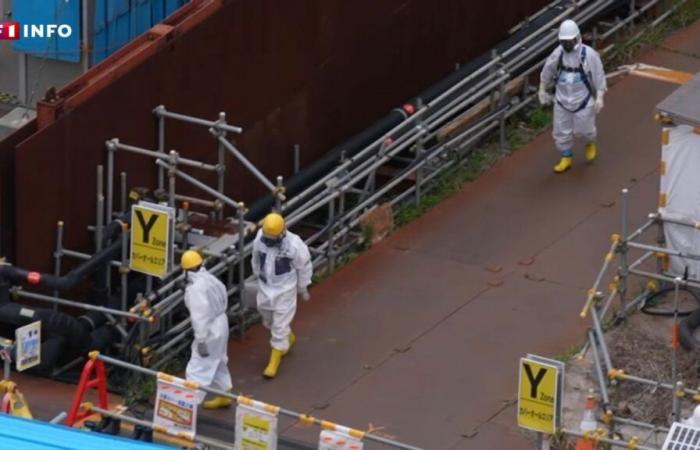
Several reactors at the Fukushima nuclear power plant in Japan exploded after the tsunami in 2011.
Since then, decontamination has been underway, despite many areas still inaccessible to humans due to mortal danger.
A team from 20H was able to get as close as possible to these destroyed installations, the decontamination of which is expected to take several decades.
Follow the full coverage
FX investigations
It is undoubtedly the most dangerous place in the world, outside of conflict zones. Locally, in Fukushima, the radiation is so intense that even the robots that advance there no longer respond, within a few seconds. In total, 5,000 workers are present on the site of the nuclear power plant, ravaged in March 2011 by a tsunami, which followed a powerful earthquake in eastern Japan. Today, these agents are heading towards the reactors damaged by the explosions following this disaster. The area is not safe, and draconian rules must be respected.
Mask, gloves, dosimeter to control the quantity of radiation. A whole range of equipment is necessary to protect oneself from this invisible enemy, in order to approach the scene of the nuclear catastrophe. A platform provides a view of the damaged reactor area. It is forbidden to stay there for more than 15 minutes: at the foot, the radioactivity skyrockets. Workers take turns on site so as not to exceed the daily doses to which they may be exposed, as shown in the exceptional 20H report to be found at the top of this article.
A project that must last 40 years
Rusty metal branches constitute the remains of reactor number 1, the framework of which was damaged 13 years ago, when hydrogen exploded from the bowels of the building. This area is strictly prohibited for humans, because it is too highly irradiated. Very recently, a mini-drone was able to film part of the melted nuclear fuel. In total at the plant, this represents 880 tonnes of highly radioactive material. How to extract it? What to do with it next?
Thirteen years after the disaster, the challenges of continuing the decontamination of the site are still immense. An example. The complex use of a backhoe loader, used to clear radioactive debris. To be able to move it to the foot of reactor no. 1, experts use remote-controlled cranes. But given the level of radiation, an individual inside would die almost immediately. Tepco, the operator of the plant, therefore had to set aside astronomical sums to finance the project, which is expected to last forty years. “The cost of dismantling the plant is estimated at nearly 60 billion euros.explains a manager of the electrician. But for the moment, if we look at the first 13 years, we have only spent 15 billion euros.“
Antitunami wall and drastic security
Today, the plant's six reactors are shut down. Today, the absolute urgency is to protect the site from another tsunami. In 2011, the 15-meter wave destroyed a large part of the installations. The cooling system breaks down and three huge explosions occur. The cores of three reactors melt. To avoid the same scenario, an anti-tsunami wall was erected around the power plant, bordered by the Pacific Ocean. The installation, which was not high enough at the time of the disaster, took two years to come out of the ground this time.
Further north, the authorities have authorized for almost a year the release of contaminated water, which was used to cool the interior of the power plant after the explosions. To access the place where this liquid is released, security is even more drastic. Our team cannot film a large part of the locations. Each movement is also calculated to avoid excessive exposure. Depending on the space in which the agents are located in the plant and the dangerousness of the radioactivity, the gowns, socks or gloves to wear are of various thicknesses.
Radioactive water released into the ocean
The water used to cool the reactors is stored in hundreds of huge tanks. Very radioactive, it is today treated and then released into the Pacific. These intermittent releases should last for around thirty years. According to Tepco, there would be no health risk. “The water, once treated, passes through several pipesan operations manager explains to our camera. It goes up into a large tank, where it is then diluted 700 times with seawater, then released into the ocean.“
-
Read also
“In a few minutes, we can die”: François-Xavier Ménage recounts his report in the Fukushima red zone
However, it is impossible to treat tritium, this residue coming from reactor operation. What are the risks once in the ocean, particularly for fish? The company set up an experiment, with the breeding of some of them in tanks filled with treated water. According to her, the fish are doing well. Measures are also regularly communicated to reassure the population, while its neighbor, China, sharply criticizes these discharges into the sea. Beijing has even ordered a boycott of Japanese fish from the Fukushima region.
The rest of François-Xavier Ménage's report in the “red zone” around the Fukushima power plant can be found in the video at the top of this article.





